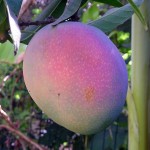by Cat, September 2007
Did you know that in times past, condiments such as sauerkraut, kimche, pickles, ketchup (catsup), marmalade, and chutneys were fermented with lactic acid instead of vinegar (acetic acid)? And that this fermenting with lactic acid preserves the raw food without the heat of canning? Sauerkraut is a well-known example of lacto-fermented food. It’s a shame that recipes changed to using vinegar followed by the canning process, as this process kills the vital elements in the food.
Chutney is a rather like a sweet-tart and spicy jam that originated in India but was brought back to England during colonial times, and adopted as their own. It is a great way to preserve fruits. Most modern cookbooks do not ferment the chutney but rather include vinegar in the original mix, and then eat within a few days, or can for storage. But because the good bacteria in lacto-fermented foods are so good for you, and they preserve the food without the heat damage of canning. I think the old-fashioned lacto-fermented version is the way to go. After fermenting, leave the mix in their brine and store closed jars in a fridge or other cold storage (like a root cellar in the winter).
- Includes: 1. Tropical Fruit Chutney; 2. Peach Chutney recipes as inspiration for creating your own fruit, veggie, nut and spice combos.
- See also: 1. Culturing & Fermentation Menu; 2. Pickling and Lacto-Fermentation (About); 3. Lactofermented Vegetables, by Lynnet Bannion, March 2007 (Links to html file)
Unlike modern pickle recipes, you do not replace the brine with vinegar for canning. Leave them in their brine and store closed jars in a fridge or other cold storage (like a root cellar in the winter).
See Pickling and Lacto-Fermentation (About) for more about the starter culture used to jump-start the fermentation process.
Tropical Fruit Chutney
You can use papaya, mango, and/or pineapples in this recipe. Feel free to experiment with different fruits and colored peppers. Makes 1 quart.
Photo of mango, right, from wikimedia commons.
Ingredients & Equipment:
- 3 cups fruit, peeled and cubed
- 1 Tbsp fresh ginger, grated
- 1 red bell pepper, seeded and cut into julienne
- 1 small onion, chopped
- 1 jalapeno chile, seeded and chopped (optional)
- 1/3 cup fresh mint leaves, chopped
- 1 bunch fresh cilantro, chopped
- 2 Tbsp Rapadura sugar or maple syrup
- 1/2 cup fresh lime juice
- 2 teaspoons unrefined sea salt
- 1/4 cup liquid from another lacto-fermentation product (or ½ tsp culture starter mixed with a few Tbsp water)
- 1/2 cup filtered water
- quart-sized, widemouth, canning jar with lid
- large bowl
- wooden pounder or a meat hammer
Process:
- Mix fruit, bell pepper, onion, jalapeno, mint and cilantro.
- Place in jar; press down with wooden pounder or meat hammer.
- Mix remaining ingredients together, and pour into jar, adding more water if necessary to cover fruit. Chutney should be at least 1 inch below the top of the jar.
- Cover tightly and leave at room temperature for 2 days before transferring to refrigerator.
- Mark date on the jar and use within 2 months.
Peach Chutney
This recipe is a wonderful mix of peaches, nuts, essence of lemon, peppers and herbs. Alternately you could use nectarines, apricots, plums or a mix of these. You could even add a few Flathead Cherries to the mix (pitted, of course).
Makes 1 quart.
Photo of peaches, right, from wikimedia commons.
Ingredients & Equipment:
- 3 cups chopped fresh peaches (3 – 5 peaches)
- ⅓ cup crispy pecans (soaked and dried)
- ½ cup dark raisins
- ⅓ cup filtered water
- juice of 2 lemons
- grated rind of 2 lemons
- 2 Tbsp Rapadura sugar or maple syrup
- 2 tsp unrefined sea salt
- ¼ cup liquid from another lacto-fermentation product (or ½ tsp culture starter mixed with a few Tbsp water)
- Spices & herbs:
- 1 tsp ground cumin
- ½ tsp red pepper flakes
- ½ tsp dried green peppercorns, crushed
- ½ tsp dried thyme
- 1 tsp whole fennel seeds
- 1 tsp whole coriander seeds
- Equipment:
- quart-sized, widemouth, canning jar with lid
- large bowl
- wooden pounder or a meat hammer
*NOTES about whey:
- I used to use liquid whey but prefer the flavor of the fermented product when I use culturing liquid from a previous batch or other fermented product. Also, whey leaves a fine white powder that floats at the top; it is not harmful, but it detracts from the beauty of the product.
- If you want to use whey, Do NOT USE powdered sweet dairy whey, nor whey protein powder. Rather, alow liquid whey to drain from cultured milk products such as yogurt or kefir (See recipe for Cream Cheese–the process separates yogurt into cream cheese and whey).
Process:
- In large bowl, mix water, lemon juice, lemon rind, sweetener, salt and whey.
- Add peaches, nuts, raisins, and spices and Mix well.
- Transfer to quart jar. Press down lightly with wooden pounder or a meat hammer, adding more water if necessary to cover the fruit. The mixture should be at least 1 inch below the top of the jar.
- Cover tightly and keep at room temperature for 2 – 3 days before transferring to refrigerator.
- Mark date on the jar and use within 2 months.


